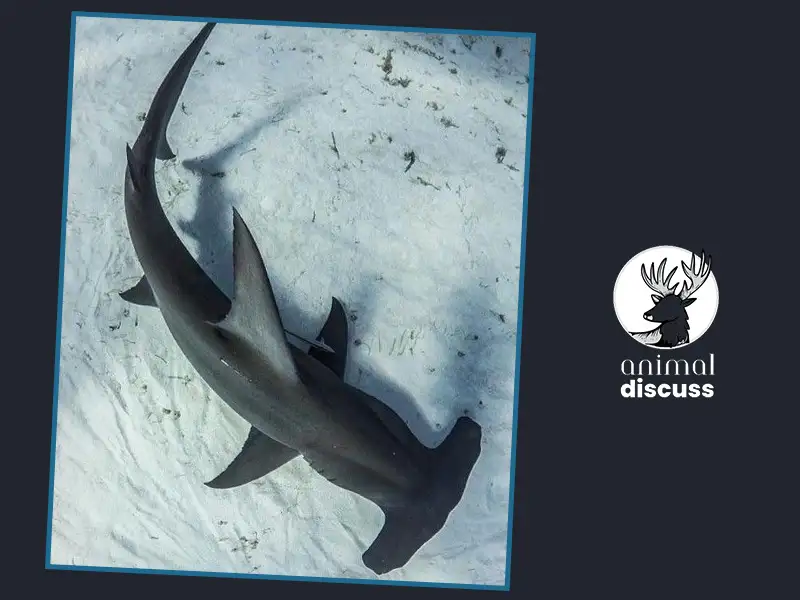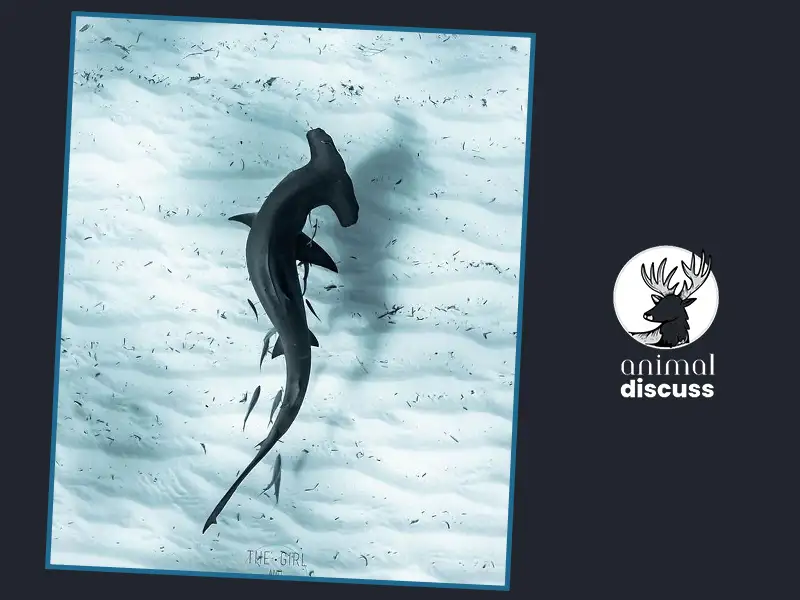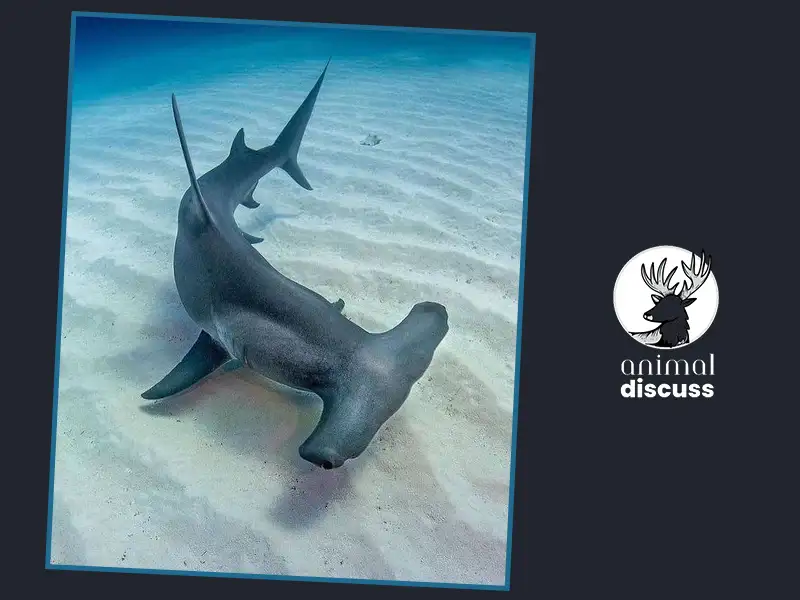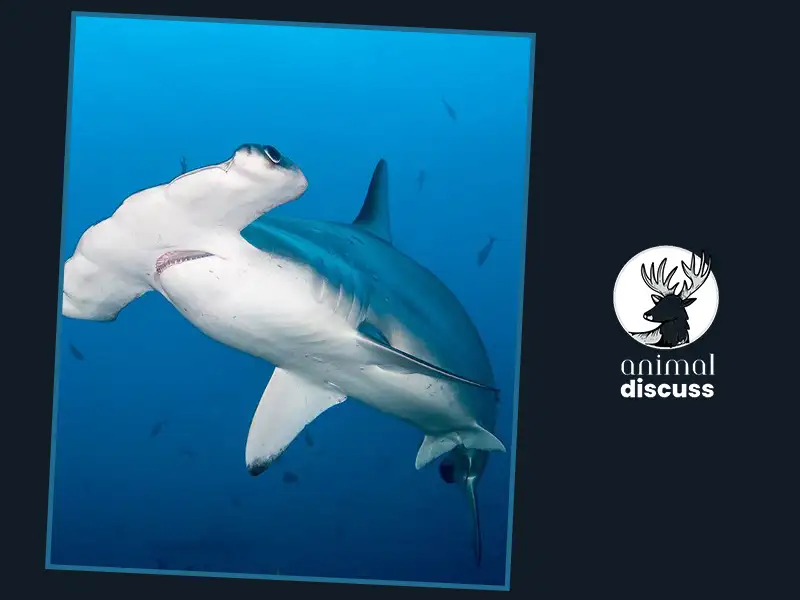Hearing the name of the shark reminds us about the human-eater animal. Funny but not true for this hammerhead shark! Though they are defensive, their eating habits are just like any other tame animal.
But what does this hammerhead shark eat? They are carnivores, meaning they eat other animals to survive such as stingrays, cephalopods, etc.
In order to understand more details about what they eat, you can check the details down below –
What Do Hammerhead Sharks Eat?
You can tell a hammerhead shark by its distinctive head shape. Not only are they excellent hunters, but their diet is diverse too.

Species, size, habitat, and season all play a role in the sharks’ dietary preferences. A rundown of what they often consume is discussed below –
Fish
When hunting for food, hammerhead sharks frequently target schools of fish. The common belief is that these fish are easier to catch because sharks’ hammer-shaped head allows them to cluster these fish together and kill them.
Moreover, hammerheads can easily subdue low-lying fish like rays and skates. Their powerful teeth slash through their resistant skin, while their flat heads aid in clinging to rays and skates.
Also, the great hammerhead is one of those animals that can hold its own against marlin, tuna, and sharks.
Other marine life
Diverse marine life creatures are a part of hammerhead shark’s diet too. Starting with Cephalopods such as crabs, octopuses, and squid are also part of their diet. Their acute sense of smell allows them to locate these creatures even in low-light conditions.
Another thing hammerheads consume, particularly the smaller ones, are crustaceans like shrimp, crabs, and lobsters.
It is known that some hammerhead species, such as the giant hammerhead, consume sea turtles. Despite this, sea turtles do not constitute the bulk of their diet.
However, not just animals, through a recent study, it has been detected that a common species called Bonnetheads shark depends on plants too. They can switch from having to eat plant-based foods to having meat.
If you want to know more details about hammerhead sharks, you can check my article
How Do Hammerheads Hunt for Food?
Cunning and faster navigator hammerheads shark hunting tactics will blow your mind for sure!

Moreover, the hunting techniques of hammerhead sharks vary with their diet and the environment. Below is a breakdown of the ways they hunt:
Benefits for the physical and sensory systems
Beginning with their eyesight, as they are able to locate food on their own or in small groups, it becomes easier for them to hunt with underwater vision. You’ll be stunned to hear that they can even move fast due to their physical shape.
For which, it can spin and chase faster and with more agility because of its flattened design.
After that comes their sense of smell. They are incredibly perceptive when it comes to smelling potential food sources. That includes blood and can do so from great distances.
One fun thing they do which scares the other fishes while they assemble together, is that they create a pressure wave or block their paths.
Sharks hunting game plan
Yes, you’ve heard it right! Sharks have game plans too which gives them the scope to hunt so many fish in a bulk amount.
Just earlier we mentioned one of their hacks which is creating a pressure wave using their hammer-shaped head to cluster the school of fish. This creates confusion and nervousness at a time for other creatures. That’s when they capture those smaller fishes.
With the hammerhead’s curving head, they keep the rays down. So, it doesn’t get away. Then, through their powerful body, they ensure to make the ray turn and give their last bite.
Another interesting trick of this hammerhead shark is that they are able to hide themselves. Either by camouflage or by hiding behind any bigger things, they target their next prey.
Last but not least, their hit-and-run attack system. As they are powerful, and in order to completely weaken their opponent, their first target is to bite it. As a result, when it’s immobilized, they do the final killing.
Adaptability and versatility of sharks
Where hammerhead sharks reside, the difficulty of their food, and their own abilities, all influence how they hunt. Although adult sharks are capable of hunting larger fish, younger sharks tend to favor smaller and easier prey.
Overall, as hunters, they adapt fast and rely on all of their senses to increase their chances of success.
How Much Do Hammerhead Sharks Eat?
Well, their eating ability varies and depends on multiple aspects. And this determines how much they consume.
Beginning with their species, young hammerhead sharks, like most juvenile sharks, have a smaller body and a lower caloric requirement than adults.

Likewise, the forms and metabolisms of hammerheads determine their specific demands. In comparison to the smaller bonnethead shark (Sphyrna tiburo), the larger great hammerhead (Sphyrna Mokarran) likely consumes a greater quantity of food.
One of the factors for their eating habit depends on the temperature of the water. Generally speaking, a higher body of water causes their metabolism to speed up, which leads them to consume more food. And the opposite when the temperature is down.
From an investigation done by the University of Hawaii, it has been detected that the quantity of food they intake –
| Young hammerhead sharks | Adult hammerhead sharks |
|---|---|
| 3.5% of their body weight | 1-2 pounds of food per day or 0.5% – 3% of their body weight daily |
What Factors Affect Hammerheads While Choosing Their Food?
Hammerhead sharks use a wide range of factors when deciding what to eat next because of their varied diet and hunting style. A few of the most critical considerations are as follows –

- Their ability to locate prey seasonally and geographically is interlinked. As their food supply fluctuates, hammerheads adapt their diet accordingly.
- In times of abundance, they target schools of fish.
- During scarcity, they shift their focus to bottom-dwelling creatures.
- They adapt their hunting strategies or switch to different prey if they sense competition for their food supply.
- Some hammerhead species have evolved distinct feeding strategies in response to differences in body size, oral power, and hunting prowess. For instance, scalloped hammerheads are masters at capturing stingrays, whereas bonnetheads prefer to catch crabs with their flat jaws.
- One of the simplest factors is that sharks of a younger age feed mostly on shrimp and krill. Insects and larger fish become available to them as they mature.
- Through trial and error, hammerhead sharks are able to figure out what works for them.
- In an effort to conserve energy, they select foods that are easy to obtain or have more nutrients per mouthful. For example, pregnant or nursing mothers have special dietary needs to ensure their babies get the nutrition they need to flourish.
In general, hammerhead sharks are adapted to adjust their diet in response to a wide variety of factors. And the capacity to adapt is crucial for their survival and success in the ever-changing ocean.
Frequently Asked Questions
We have discussed every section broadly. Yet, a few questions are not clarified properly. That you can learn from going through this section. Have a look –
01. What is the best food for baby hammerhead sharks?
Squid and fish bones are staple foods for scalloped hammerhead sharks. Squids, sharks, rays, and fish with bones make up the adult diet.
02. What is a hammerhead shark’s preferred food?
On the ocean floor, great hammerhead sharks prey mostly on crustaceans, stingrays, cephalopods (such as octopus and squid), and other sharks. Many have witnessed giant hammerheads pinning down stingrays with the sides of the head as they devour the rays’ wings.
03. What is the process of hammerhead shark digestion?
When sharks ingest their prey whole, the water-based digestive fluid known as chyme is produced. In order to digest food, the stomach contracts release concentrated hydrochloric acid, and secretes protease enzymes (pepsin).
04. Is it true that hammerhead sharks prey on whales?
When it comes to feeding hierarchy in the environment, larger animals typically take preference over smaller ones. For this reason, larger sharks may prey on smaller ones, such as tiger sharks or killer whales.
Conclusion
Hammerheads shark’s favorite food is fish and almost a large quantity of it depends on it. Besides, they can be flexitarians too, which is switching from meat to a plant-based diet. So, their entire diet depends on multiple aspects.
One of the coolest aspects of them is their hunting ability. With the 20-mph top speed, this cunning animal looks out for its prey. Hope this article was sufficient enough to clarify your doubts regarding what hammerhead sharks eat.
References
- https://www.georgiaaquarium.org/animal/great-hammerhead-shark/
- https://www.nationalgeographic.com/animals/fish/facts/hammerhead-sharks
- https://oceana.org/marine-life/great-hammerhead-shark/
- https://www.pdza.org/hungry-hungry-hammerheads/

